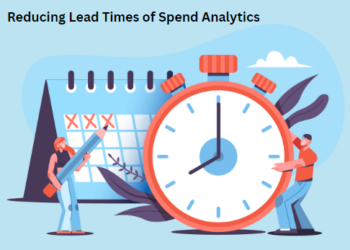Continuous value generation with spend analysis
Category management was introduced by Brian F.Harris to business first within retail where supplier bases usually are extremely large and ever-growing. Rationalizing suppliers base through the lens of spend proved to be significantly effective to save costs and improve bottom line and service with much lower effort. Spend management is a journey and takes time before the value is generated for the organization. Therefore, it is key for the organization to have a clear objective on “why” they do spend analysis.
There are two major camps when it comes to the spend analysis approach, each has its own merits: tactical and strategic approach. The main difference between the two approaches is the longevity of value creation for the organization. For the tactical approach, the organization looks at spend analysis activity from an Account Payable (AP) lens only. Regardless of the limited input sources, a tactical approach is usually able to create considerable short-term value however will fail to keep generating in the long term. On the other hand, in the strategic approach, the organization takes a continuous as well as cross-functional approach to spend analysis and provides a wider variety of data input sources for spend analysis such as finance, operations, and quality. This approach results in an iterative and sustainable value generation process.
In this article, we give a brief on the highlights and the key aspects of spend analysis. The goal is to shed light on best practices of spend analysis.

Leadership support is the most critical and the most overlooked for any spend analysis initiative where it is more of an enabler than the end goal. To establish spend analysis as a strategic objective, the scope of engagement shouldn’t be limited to procurement only (this is not AP exercise!) but various parts of the organization (finance, operations, quality, advance ops, etc) should be kept engaged to drive, collaborate in the process as well as realized benefits.
The wide range of engagement serves mainly two purposes: one, extracting the right data and understanding it is a cross-functional effort; and two, creating the trust and gaining commitment across all teams and have them all united for the benefits. It may be a red flag if there is not enough commitment and may lead to exposures to inefficiencies or even mistakes as well as removing control concerning spending (how much and with whom) across different functions. It may look like a chicken and egg problem, however, at every milestone however small, teams and especially leadership need to be involved for feedback. The feedback/action items need to get sufficient attention and follow up by the teams such that an environment of trust is created and the process and outcoming results are accepted by all stakeholders. This will gain momentum and confidence so leadership and key figures can promote the initiative and increase the adoption to the next milestones.
Understanding current strength and weaknesses: systems and process
Before starting anything, it is important to understand the status quo. What spend-related systems/reporting are in place today. How are these being used today? What are strengths and weaknesses (objectively)? How are they being used by users? What is the perception of users and management teams concerning these systems and their added value? What information exists today? What type of intelligence exists as well as how sustainable and scalable is this solution? What kind of processes are these systems and tools embedded into? Understanding the ecosystem is the first step before initiating anything else as this will lead to defining the foundation needed in place and critical next steps.
Understand your users: The People
Next to looking into tools and processes, the other key element is people/users. Gaining a clear understanding of who is utilizing the data today and how do they use it is key. What is the leadership team interested in versus what analysts expect? Is there any way to make working with data easier for each group? Is a function like a data steward existing within the org where he or she acts as a single point of contact (SPOC) for other users? If so it is critical to include those teams as part of the core team to gain their knowledge and full engagement (they know all about the most important data) as well as avoiding any pushbacks from them – in the end, these groups could be best ambassadors for such an initiative.
In short understanding the user community is key – usually, leadership wants to have a helicopter overview and looking into “right” data with full confidence and analysts want to get into details daily and would love to access slice and dice information easily through an engaging environment.
Understand your data sources: scoping the initiative
According to IBM based on interviews nearly 400 supply chain executives in 25 countries, 70% of executives said “their number one challenge is overwhelming and fragmented data, as well as lack of ability to make sense out of the information”
This is and will remain one of the most challenges of any data-relevant initiatives for the coming decade. Organizations have their data siloed in different systems (e.g. ERPs, data warehouses, clouds) each one with its governance, language, and terms.
The first step is to fully understand the scope, where the data are coming from, how many sources exist, which systems are involved and how this data can be extracted. The next set of questions that teams need to work together to gain understanding (and potentially testing) is understating the quality of the data across each source and people who are in charge of those. Specific to spend analysis effort key understanding should be: is all data we are using going to be invoiced (AP data) or PO data? Or a mix of both and why. Do we have access to contracts? Are project expenses available (which are kept outside of AP records)? If so what portion of the total cost do they represent.
There are some key guidelines here – as this is probably the most challenging part try to avoid falling into perfection traps by applying the below principles:
- Don’t wait for perfect data – it doesn’t exist! Start with good data – this is more than enough!
- How much data is needed? There is no straight to this question – keep in mind the main goal for such an initiative is to generate value – so how much data is needed can be answered by: as much as little value (through POC) can be generated.
You might find all different limitations (on extraction, resources needed, etc) – don’t wait for “perfect data” to start with good data as soon as possible. Here is the most repetitive question CPOs and commodity leaders keep asking: “How much data is needed?” The answer is: As much as little value can be captured as a result.
Recap: Above are all soft part of this initiative but key ones – the ones that are maker or breaker for this initiative – Make sure your leadership team is as enthusiastic as you are, understand in house capabilities and type of users (community involved) and your source of data – this is 50% of the journey but the value it generates is everlasting for the organization.
In the next article (part 2) we will dig into the remaining steps from data cleansing to defining your spend cube(s) and walk through best practices as well as common mistakes made. Stay tuned!
Turbocharge Category Strategy Execution
Turbocharge your category strategy execution & drive continuous business value Category owners invest significant time in stakeholder engagement, in data...
Rewiring Spend Analytics
Rewiring Spend Analytics - the New Era Procurement has more than ever to gain from advances in technology—and more to...






